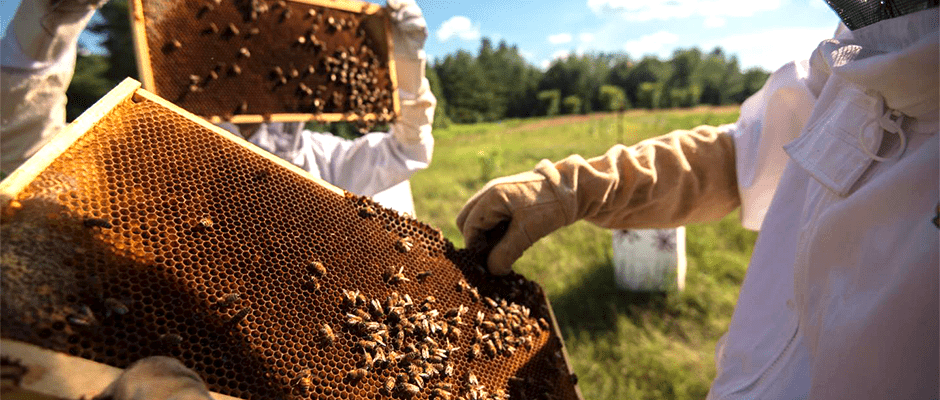Share this article
Scientists find 27 new bee viruses
Ever since the demise of bee colonies worldwide came to conservationists’ attention over a decade ago, the effort to better understand diseases afflicting bees has been gathering momentum. More recently, scientists identified over two dozen previously unknown viruses that jump across bee species around the world, and they hope their findings will help protect diverse communities of these vital but vulnerable pollinators.
“We don’t know a lot about viruses infecting bees,” said David Galbraith, first author on the paper published in Scientific Reports. “We need to be monitoring and making sure the viruses don’t spread into naive populations. If they’re infected with this virus and don’t die but don’t forage as much, that could stress the colony because they don’t have enough resources to sustain their workforce.”
In 2017, while he was a postdoctoral researcher at Pennsylvania State University, Galbraith and his colleagues set out to investigate novel bee viruses around the globe. They studied specimens collected from honeybees (Apis mellifera) and 11 other species throughout the United States, Central America, Europe, Kenya, India and New Zealand.
In the laboratory, Galbraith pulverized the samples, filtered out the viruses they contained and isolated the viruses with chemicals that break down bee remains and bacteria. The team sequenced the viruses’ genomes by virtually piecing together tiny fragments of their genetic material, known as nucleotides, and comparing the arrangement of their genes and proteins to those of known related species. The scientists distinguished viruses from one another based off a well-conserved gene many possess to replicate themselves.
“When you’re looking for novel stuff, you don’t know what could be there,” Galbraith said. “These strings of nucleotides can be pieced together like a puzzle to get longer strings.”
These longer strings, called contigs, ultimately lead to a full viral genome, allowing researchers to compare them to previously identified viral genomes, find similar viruses and predict properties of the new viruses.
Galbraith’s team found 27 new viruses, in addition to several common ones, out of the 20 bee viruses discovered by prior research that centered on North American and European honeybees.
He recommends devising ways to screen bees for identified viruses, quarantining affected populations and analyzing the risks to global bee communities. More studies are needed, he said, to include many more species, particularly those most likely to be moved between countries.
“If we bring in some bee species we don’t even know about that carries a virus into the U.S. population,” he said. “They’re not going to be able to defend themselves.”
Header Image: A researcher examines a bee sample in Kenya. ©Jeff Kerby








